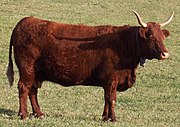反式脂肪,又称为反式脂肪酸或逆态脂肪酸。英语为“ trans fatty acid ”或“ trans fats ”。是一种不饱和脂肪酸(单元不饱和或多元不饱和)。反式脂肪的名字来源于他的化学结构,其分子包含位于碳原子相对两边的反向共价键结构,和“顺式脂肪”比较起来此反向分子结构较不易扭结。
不饱和脂肪酸的分子式因氢原子的方位不同,因而分为两种结构:一种为顺式键结,另种则为反式键结。天然的不饱和脂肪酸几乎都是顺式键结,所以动物所能代谢的大多为顺式链结的脂肪。反式脂肪酸是经人工氢化处理后才诞生的,自然界中几乎不存有,人也难以处理此类不饱和脂肪,一但进入人体中,不是人体所需要的营养素 [1] ,大都滞留于人体,进而增加患心脏血管疾病的机率 [ 见综述 2] 。一般脂肪需要七天排出体外,可是,反式脂肪则需要长达 51 天才能分解、排出。
冠心病
现在被广为应用的冠心病两个血液指标: LDL/HDL 比率(越高越危险)和 C- 反应蛋白(越高越危险)。反式脂肪减少 HDL (有利健康的胆固醇)的水平,但增加 LDL 的水平,从而导致冠心病高发率 [4] 。反式脂肪比饱和脂肪更能引发冠心病,它可以比饱和脂肪提高 LDL/HDL 比率达两倍 [5] 。对 700 名护士的研究发现反式脂肪食用最高组比最低组 C- 反应蛋白高出 76%[6] 。
关于 冠心病 死亡率的研究,发现 反式脂肪摄入会增加死亡率,不饱和脂肪摄入会减少死亡率 [7][8] 。研究发现美国每年 30,000 到 100,000 起心脏病死亡案例归罪于食用反式脂肪 [3] 。
癌症
还没有确定的结论,但最近的一个研究发现反式脂肪和前列腺癌有关。
糖尿病
人们越来越关心是否反式脂肪与二型糖尿病有关 [7] 。 84941 女性护士 16 年的跟踪研究发现,反式脂肪摄入量最高组糖尿病增加 39%[10] 。
不育症
一个 2007 年的研究发现:“从反式脂肪中而不是从糖水化合物取得能量每提高 2% ,卵子不育可能性增加 73%[11] 。
来源
反式脂肪主要来自经过部份氢化的植物油。“氢化”是在 20 世纪初期发明的食品工业技术,并于 1911 年被食用油公司“ Crisco ”首次使用。部份氢化过程会改变脂肪的分子结构(让油更耐高温、不易变质,并且增加保存期限),但氢化过程也将一部份的脂肪改变为反式脂肪。
食物包装上一般食物标签 列出成份如称为“氢化植物油”、“部分氢化植物油”、“氢化脂肪” 、“氢化菜油”、“固体菜油”、“酥油”、“人造酥油”、“雪白奶油”或“ shortening ”即含有反式脂肪。
天然反式脂肪会出现在反刍动物(如牛,羊)的奶中和体脂肪中。含量为总脂肪的 2-5 % [12] 。天然反式脂肪,其中包括共轭亚油酸和 vaccenic 酸,起源于这些动物的瘤胃。
Table 1. Typical Trans Fatty Acid Content of Foods Produced or Prepared | ||||
with Partially Hydrogenated Vegetable Oils in the United States . | ||||
Type of Food | Trans Fatty Acid Content | |||
g/Typical Serving | g/100 g | % of Total Fatty Acids | % of Energy Intake 2000-kcal diet | |
Fast or frozen foods | ||||
French fries† | 4.7–6.1 | 4.2–5.8 | 28–36 | 2.1–2.7 |
Breaded fish burger‡ | 5.6 | 3.4 | 28 | 2.5 |
Breaded chicken nuggets‡ | 5 | 4.9 | 25 | 2.3 |
French fries, frozen† | 2.8 | 2.5 | 30 | 1.3 |
Enchilada‡ | 2.1 | 1.1 | 12 | 0.9 |
Burrito‡ | 1.1 | 0.9 | 12 | 0.5 |
Pizza† | 1.1 | 0.5 | 9 | 0.5 |
Packaged snacks | ||||
Tortilla (corn) chips† | 1.6 | 5.8 | 22 | 0.7 |
Popcorn, microwave† | 1.2 | 3 | 11 | 0.5 |
Granola bar‡ | 1 | 3.7 | 18 | 0.5 |
Breakfast bar‡ | 0.6 | 1.3 | 15 | 0.3 |
Bakery products | ||||
Pie† | 3.9 | 3.1 | 28 | 1.8 |
Danish or sweet roll† | 3.3 | 4.7 | 25 | 1.5 |
Doughnuts† | 2.7 | 5.7 | 25 | 1.2 |
Cookies† | 1.8 | 5.9 | 26 | 0.8 |
Cake† | 1.7 | 2.7 | 16 | 0.8 |
Brownie† | 1 | 3.4 | 21 | 0.5 |
Muffin† | 0.7 | 1.3 | 14 | 0.3 |
Margarines | ||||
Vegetable shortening† | 2.7 | 19.2 | 19 | 1.2 |
Hard (stick)† | 0.9-2.5 | 6.2-16.8 | 15-23 | 0.4-1.1 |
Soft (tub)† | 0.3–1.4 | 1.9–10.2 | 5–14 | 0.1–0.6 |
Other | ||||
Pancakes† | 3.1 | 2 | 21 | 1.4 |
Crackers† | 2.1 | 7.1 | 34 | 0.9 |
Tortillas† | 0.5 | 1.8 | 25 | 0.2 |
Chocolate bar† | 0.2 | 0.6 | 2 | 0.1 |
Peanut butter† | 0.1 | 0.4 | 1 | 0.05 |
监控和管制
反式脂肪在少数国家中被严格管制,而较多国家要求食品制造商必须在产品上标注是否含有反式脂肪,而也有多起因反式脂肪而引起的法律诉讼正在进行(主要是针对速食店进行的诉讼)。许多食品公司已经主动的停止在产品中使用反式脂肪,或是增加不含反式脂肪的产品线。
世界卫生组织建议,人们平均每天摄入的反式脂肪应为总能量的 1% 或更低;换言之,每日摄取不超过 2 克的反式脂肪。目前,中国人平均日摄取百分比为 1% ,并未超过世卫建议的水平;美国则是 2.6% ,明显超标。
有鉴于此, 2006 年美国立法要求所有每份含反式脂肪超过 0.5 克的食物都必须在标签上注明;几周前纽约更立法要求,从 2007 年开始,餐馆使用的油类、人造黄油和植物乳化油等,每份反式脂肪含量不能超过 0.5 克。
虽然中国人的反式脂肪含量仍处在健康水平,无需效仿纽约的做法,但保健促进局已开始跟食品厂商、材料供应商和快餐店等商讨推出较低或不含反式脂肪的材料和食品,并鼓励商家把食品中的反式脂肪含量列在包装上,提高公众对反式脂肪的意识。
通过该局种种标准、不含反式脂肪或仅含有少过 0.05 克反式脂肪的食品都能够拥有“更健康选择”标签。
文献:
1. Food and nutrition board, institute of medicine of the national academies ( 2005 ). Dietary Reference Intakes for Energy, Carbohydrate, Fiber, Fat, Fatty Acids, Cholesterol, Protein, and Amino Acids (Macronutrients) . National Academies Press , 423.
2. Mozaffarian D, Katan MB, Ascherio A, Stampfer MJ, Willett WC (April 2006). "Trans Fatty Acids and Cardiovascular Disease". New England Journal of Medicine 354 (15): 1601–1613.
3. Mozaffarian D, Katan MB, Ascherio A, Stampfer MJ, Willett WC (2006). "Trans fatty acids and cardiovascular disease". N. Engl. J. Med. 354 (15): 1601–13.
4. Food and nutrition board, institute of medicine of the national academies (2005). Dietary Reference Intakes for Energy, Carbohydrate, Fiber, Fat, Fatty Acids, Cholesterol, Protein, and Amino Acids (Macronutrients). National Academies Press, 504.
5. A Ascherio (1999). "Trans fatty acids and coronary heart disease.". New England Journal of Medicine 340 (25): 1994–1998.
6. Lopez-Garcia, Esther (2005). "Consumption of Trans Fatty Acids Is Related to Plasma Biomarkers of Inflammation and Endothelial Dysfunction". The Journal of Nutrition 135 (3): 562–566.
7. Trans Fat Task Force (June 2006). "TRANSforming the Food Supply (Appendix 9iii)". Retrieved on 2007-01-09. (Consultation on the health implications of alternatives to trans fatty acids: Summary of Responses from Experts)
8. Oh, K; Hu, FB, Manson, JE, Stampfer, MJ, Willett, WC (2005). "Dietary fat intake and risk of coronary heart disease in women: 20 years of follow-up of the nurses' health study". American Journal of Epidemiology 161 (7): 672–679.
9. Jorge, Chavarro; Meir Stampfer, Hannia Campos, Tobias Kurth, Walter Willett & Jing Ma (2006). "A prospective study of blood trans fatty acid levels and risk of prostate cancer". Proc. Amer. Assoc. Cancer Res. 47. American Association for Cancer Research.
10. Hu, FB; van Dam, RM, Liu, S (2001). "Diet and risk of Type II diabetes: the role of types of fat and carbohydrate". Diabetologia 44 (7): 805–817.
11. Jorge E Chavarro, Janet W Rich-Edwards, Bernard A Rosner and Walter C Willett Dietary fatty acid intakes and the risk of ovulatory infertility American Journal of Clinical Nutrition, Vol. 85, No. 1, 231–237, January 2007
12. Trans Fat Task Force (June 2006). "TRANSforming the Food Supply




